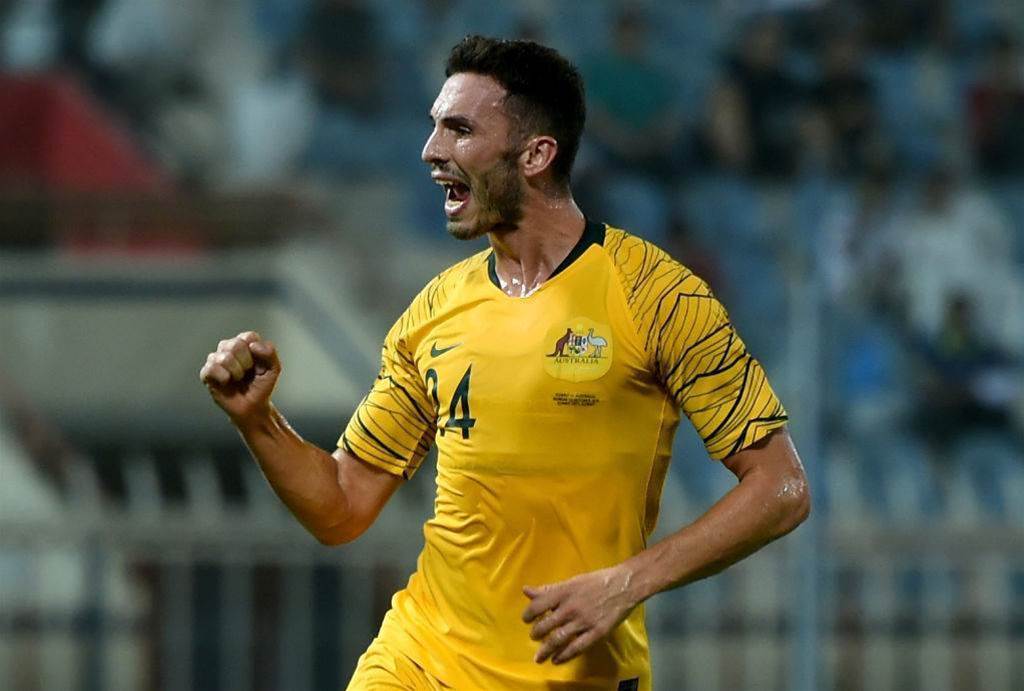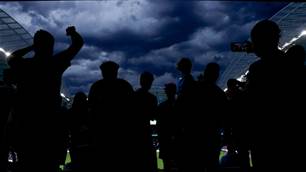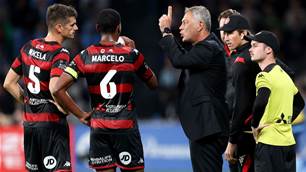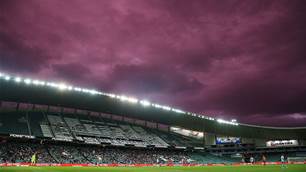While Kuwait were not a strong opponent, much can still be taken from Graham Arnold's first game in charge of the Socceroos
1. Solution found to qualifying woes?
At times the Socceroos were arguably caught overplaying in possession during the last qualifying campaign, to the detriment of results. Graham Arnold may have found a way to beat teams such as Kuwait in unrelenting conditions not suited to a constant press.
In contrast to Ange Postecoglou’s emphasis on a possession-first playing style, the Socceroos were happy to cease possession and choose when to press in the second half, which provided Kuwait with an opportunity to conjure their best efforts on goal.
Still, Kuwait were restricted to shots from distance, as the compact Aussie defence stood in the way of their efforts at counter attacking.
2. Striker is still up for grabs

Arnold’s comments in the build up to this clash referenced a need to get more players in to the opposition box in order to have a greater chance of scoring and to take the weight off the striker’s shoulders. Simple enough to say.
While the first half (and latter stages of the second) displayed this focus, the Socceroos still lacked a cutting edge and decisiveness at times. Sometimes, to put it plainly, the Socceroos just will not shoot. In the battle between Apostolos Giannou and Tomi Juric, it was arguably Juric who impressed more in his substitute cameo.
Giannou’s preference to create from deep differs to Juric’s desire to link in and around his teammates in the box. Potentially, Jamie Maclaren (or Mathew Leckie in a shifted role) could provide a solution to the figurehead position at the top of the formation.
One thing is for sure, South Korea in November will be a sterner test.
3. Luongo and Mooy not a definite duo
Arnold’s formation means two box to box midfielders sit in front of the defence. The obvious test in the match-up with Kuwait was who, out of Massimo Luongo or Jackson Irvine, is best suited to partner Aaron Mooy in midfield.
If anything, this match proved that the Socceroos’ high tempo pressing and fast build up play (which well and truly complimented the Socceroos’ individual talents) was best suited to the skillset of Luongo and Irvine.
Questions of whether Mooy should be pushed further up the field to recreate the form of his Melbourne City days is a compounding headache for Arnold to deal with and whatever the solution, it looks to bode well for the future.

4. Robbie Kruse can still be the player we expected him to be
The perennial ‘villain’ and scapegoat in a Socceroos shirt, Robbie Kruse played in a fashion reminiscent of his best form at Bundesliga side Bayer Leverkusen. At 30, he shrugged off the mental pressure and played with the enthusiasm the likes of youngsters Daniel Arzani and Awer Mabil provided when brought on.
His running, crossing and dribbling were top notch, showing there is still talent on offer within the man who earned some extreme criticism for his performances in Russia at the World Cup.
While he perhaps warranted the disdain of Socceroos fans in the past, he seems primed to thrive in Graham Arnold’s set up which is something to look forward to.
5. The kids are alright

The stories of Awer Mabil and Thomas Deng, coming to Australia from a war torn South Sudan and becoming close friends through mutual adversity grabbed headlines overnight. Their arrival signalled the beginnings of Arnold’s blending of youth with experience and it worked a treat.
The multitude of diverse faces in the Socceroos setup is a reflection of the nation itself, but more importantly the desire and talents of the youngsters demonstrates a clear ability in the generations to come.
Mabil, Deng, Alex Gersbach and Arzani are the Socceroos stars of the future and based on their influence on the pitch, we should be more excited than worried about what's to come.
Related Articles

Irankunda in strong Socceroos squad for Cup qualifiers

Six in the mix: Wanderers' short-list includes Arnie's Dutch pick












